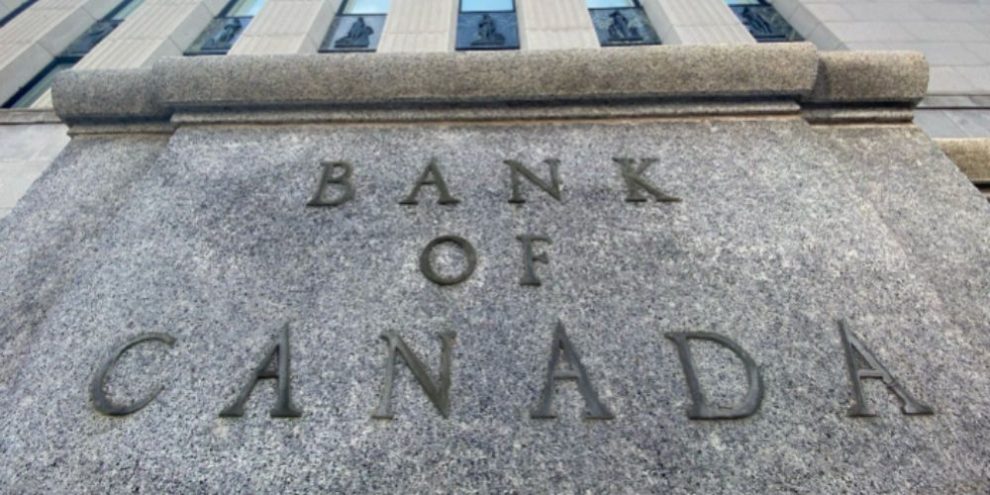
The Bank of Canada has raised its key interest rate by the highest amount in more than 20 years and warns more rate hikes are coming amid new forecasts for higher inflation levels.
Governor Tiff Macklem said inflation is too high and is expected to stay elevated for longer than the bank previously thought.
"The invasion of Ukraine has driven up the prices of energy and other commodities, and the war is further disrupting global supply chains," he said.
"We are also concerned about the broadening of price pressures in Canada."
The central bank hiked its policy interest rate by half a percentage point on Wednesday to one per cent.
The last time the central bank raised its key interest rate by half a percentage point was May 2000.
The increase in the bank’s key interest rate is expected to prompt Canada’s big banks to raise their prime rates — a change that will increase the cost of loans linked to the benchmark, including variable-rate mortgages.
Canada's big five banks including RBC, TD Bank, CIBC, BMO, and Scotiabank all said they would raise their prime rates by half a percentage point to 3.20 per from 2.70 per cent, effective Thursday.
James Orlando, a senior economist at TD Economics, said higher interest rates will put pressure on household borrowing costs as Canadians will have to spend more servicing their debt.
"Rates are going to start going up at a much faster pace than people are used to," he said. "They’re ramping up an acceleration of rate hikes and there’s going to definitely be more to come."
In its spring monetary policy report released along with the interest rate decision, the Bank of Canada raised its expectations for inflation due in large part to the spike in energy and other commodity prices in the wake of Russia’s invasion of Ukraine.
It said it now expects the annual inflation rate to average almost six per cent in the first half of this year and remain well above its control range of one to three per cent throughout 2022 before easing to about 2.5 per cent in the second half of 2023.
In its January monetary policy report, the central bank had said it expected inflation to be close to five per cent in the first half of 2022 before falling to about three per cent by the end of the year.
The annual pace of inflation in February climbed to 5.7 per cent, up from 5.1 per cent in January, Statistics Canada reported last month. The agency is expected to release its inflation figures for March, which will include the spike in gasoline prices due Russia’s invasion of Ukraine, next week.
Sherry Cooper, chief economist at Dominion Lending Centres, said the central bank now realizes that inflation is coming, not just from supply disruptions but also from excessive demand.
"Considering the surge in inflation and the strength of the Canadian economy, another jumbo rate hike may well be in the cards," Cooper said.
High levels of household debt are a key risk for the economy and higher interest rates will raise costs for Canadians who are already facing higher prices at the grocery store and gas pumps.
Macklem said Canadians should expect interest rates to continue to rise toward more normal levels, but stressed the central bank has an inflation target, not an interest rate target.
"We do see the need for interest rates to rise further, but we're not on autopilot. We're not headed to some preset destination for interest rates," he said.
"We will be assessing how the economy is responding. We will be looking at the impact of higher interest rates on Canadians. We are very aware that Canadian households on average are relatively highly indebted."
The Bank of Canada on Wednesday returned its estimate for the nominal neutral rate — the point at which its key interest rate neither stimulates or weighs on the economy — to its pre-pandemic level of a range between two per cent and three per cent.
The bank’s April 2021 estimate was a range of 1.75 per cent to 2.75 per cent.
The Bank of Canada also said it would start easing other pandemic-era stimulus measures. The central bank will begin "quantitative tightening" starting April 25, when the government bonds it holds will no longer be replaced when they mature. At the start of the pandemic, the Bank of Canada bought billions in government bonds, in a move designed to keep money flowing when the economy shuddered to a halt.
In its outlook for the economy, the Bank of Canada said it expects growth in the second quarter to pick up to an annual rate of 6.0 per cent, an increase from 3.0 per cent in the first quarter.
It said the effects of the Omicron COVID-19 variant weighed on the economy at the start of the year but were short lived.
The bank said the housing market was strong in the first quarter, but it expected sales to soften somewhat in the second quarter as mortgage rates rise.
The central bank’s next interest rate announcement is set for June 1, while its next monetary policy report, which will include its updated outlook for the economy and inflation, is scheduled to be released along with the bank's July 13 interest rate decision.
Banner image: The Bank of Canada building is seen in Ottawa, Wednesday, April 15, 2020. THE CANADIAN PRESS/Adrian Wyld






